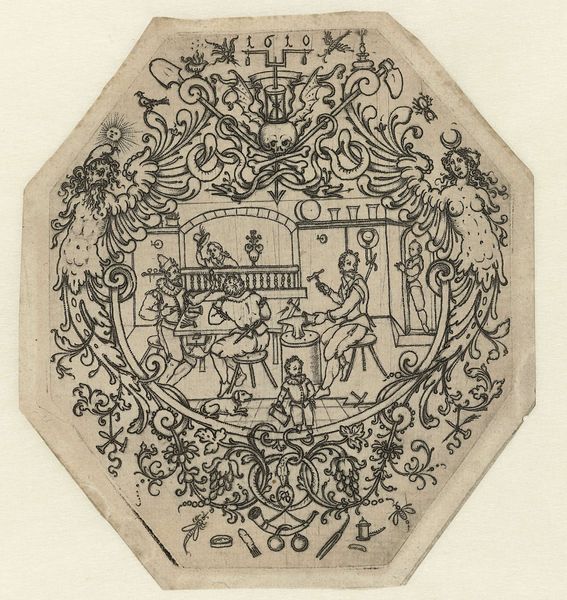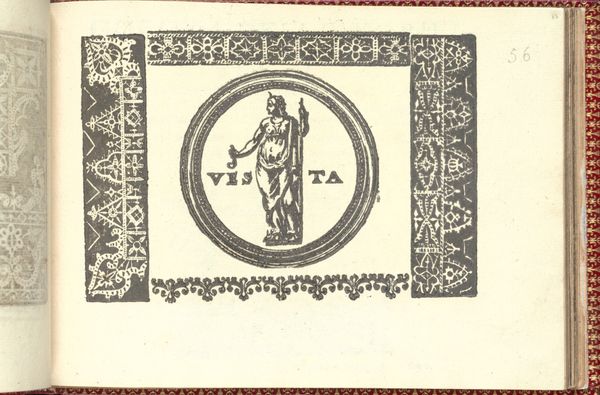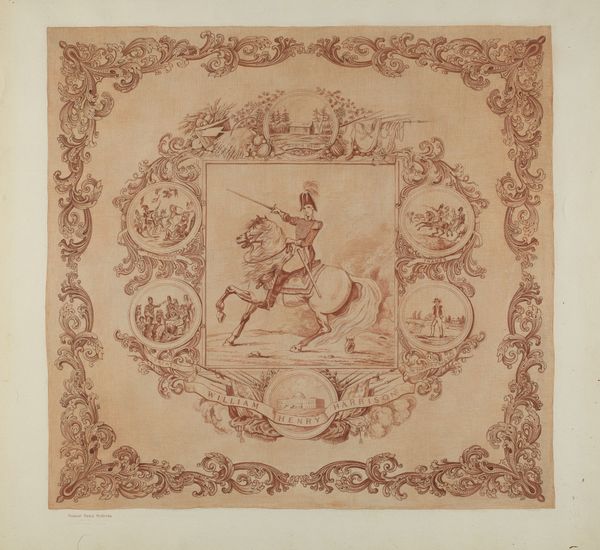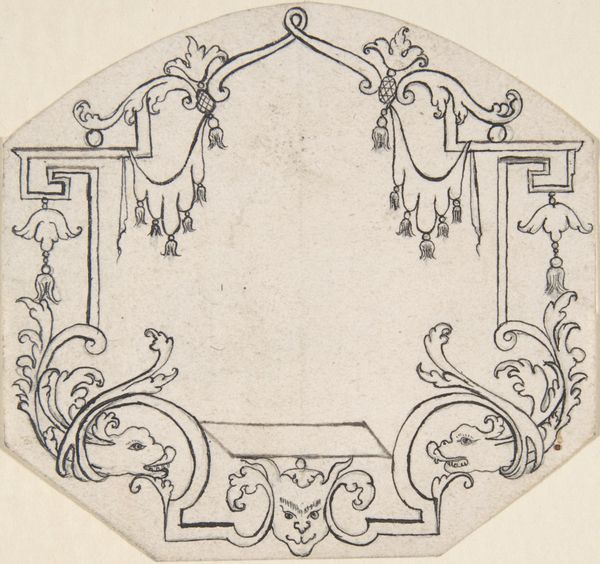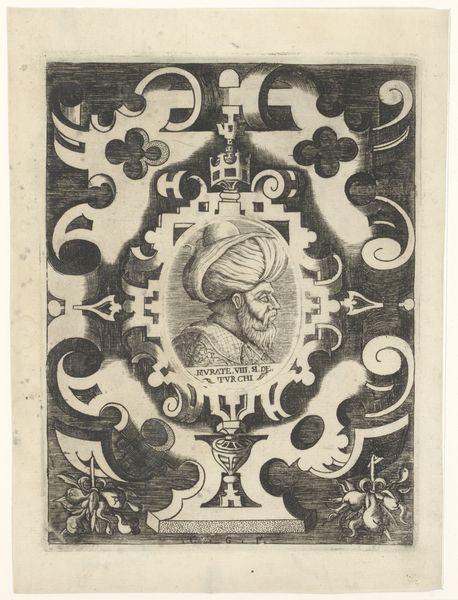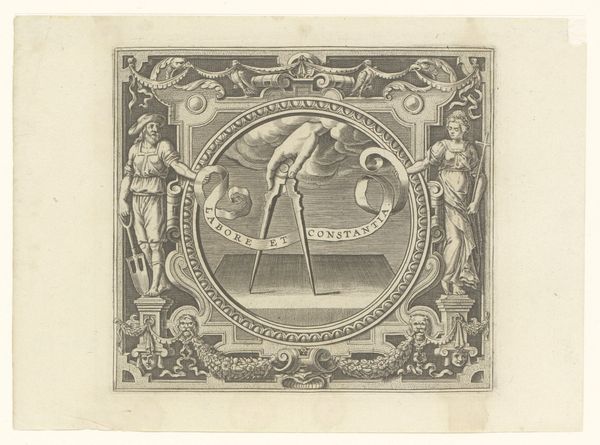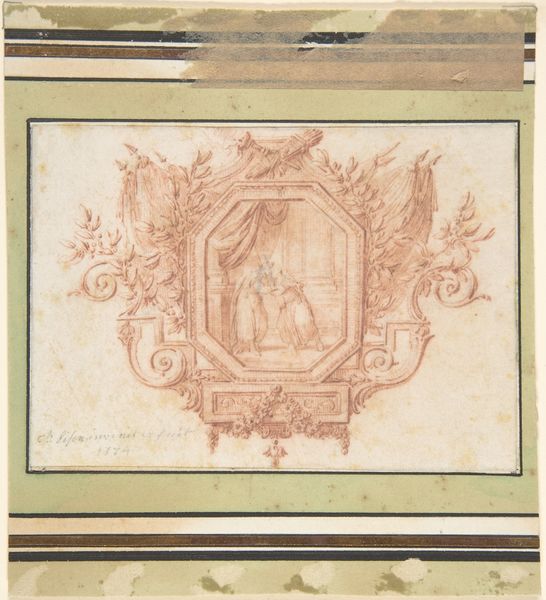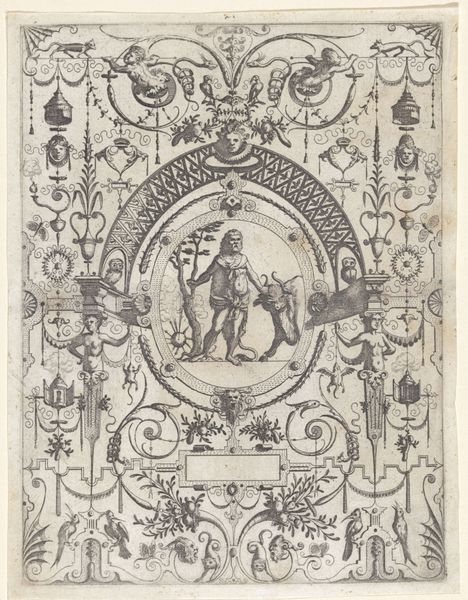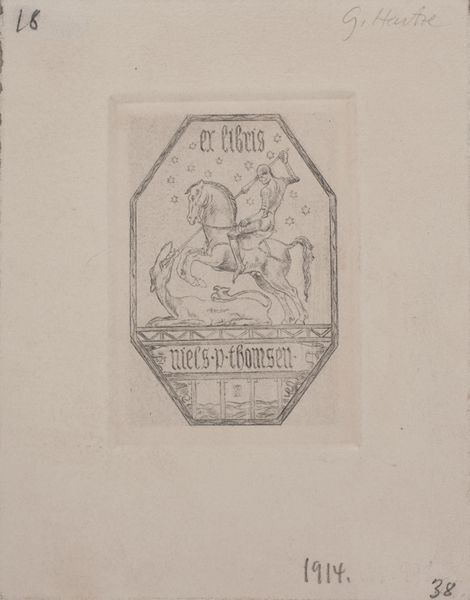
Minerve assisse dans un octagone décoratif, avec une figure à gauche et à doroite (la Nuit et le Jour?) (Minerva seated within an octagonal border, wth a figure at the right and at the left (Night and Day?), from Recueil de Différentes Compositions Frises et Ornements dessinées et gravées à la manière du lavis par La Grenée le Juene Se trouve chez l'Auteur, au Louvre et chez Basan, rue et Hôtel Serpente A Paris, in an album containing Recueil de Compositions par Lagrenée Le Jeune (Collection of Compositions by Lagrenée the Younger) 1784
0:00
0:00
drawing, print, engraving
#
portrait
#
drawing
#
neoclacissism
#
allegory
# print
#
classical-realism
#
figuration
#
classicism
#
line
#
genre-painting
#
history-painting
#
engraving
Dimensions: Sheet: 15 13/16 × 21 7/16 in. (40.2 × 54.5 cm) Plate: 6 7/8 × 15 15/16 in. (17.5 × 40.5 cm)
Copyright: Public Domain
Jean Jacques Lagrenée created this print called *Minerva seated within an octagonal border* in France in the late 18th century, using a wash manner of engraving. This print, intended for an album of designs, reflects the cultural fascination with classical antiquity prevalent at that time. Minerva, the Roman goddess of wisdom and strategic warfare, sits enthroned. This image connects with the broader social context of the Enlightenment, when knowledge and reason were highly valued and when a new, revolutionary society was being imagined. The figures of Night and Day emphasize the all-encompassing nature of wisdom. Lagrenée's print also hints at the institutional structures shaping art production. The print was sold at the Louvre, reflecting the Royal Academy’s dominance of artistic taste. Understanding this print fully requires examining how classical imagery was used to convey power and legitimacy in late 18th-century France. Research into period treatises on art and design, as well as the history of the French Academy, would shed further light on its meanings. As historians, we recognize that a work like this one is a product of its specific social and institutional moment.
Comments
No comments
Be the first to comment and join the conversation on the ultimate creative platform.
